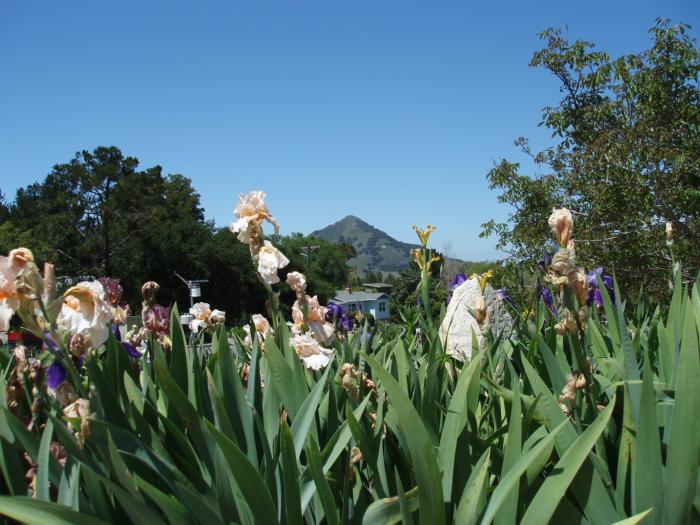Contact Us
Call a Helpline:
Arroyo Grande (805) 473-7190
San Luis Obispo (805) 781-5939
Templeton (805) 434-4105
Send us an email: anrmgslo@ucanr.edu
Follow us on social media:
History of the Garden
The idea for a Demonstration Garden for the UC Master Gardener Program of San Luis Obispo County started in 2003. At that time, a need was identified to provide more community-based education on horticultural practices for the home gardener. The idea centered on transforming an unruly weed-covered empty lot containing a single 100-year-old English walnut tree into a demonstration garden. This site was intended to serve as an outdoor learning facility, primarily to provide the public with hands-on, interactive experiences on sustainable garden practices. The groundbreaking ceremony was on June 11, 2009. This was the beginning of hard work for many Master Gardener volunteers, and included weed control, berm and swale construction for water runoff control, and installation of wheelchair compliant garden paths. Many of the garden structures were built by Master Gardener volunteers.
The Garden of the Seven Sisters
By Andrea Peck, Master Gardener
With the UCCE building full of eager and energetic Master Gardeners sitting just a parking lot away, the empty lot and single 100+ year-old English Walnut tree just didn’t stand a chance. Hiding behind the lots' significant slope and unruly weed cover, sat the tree and enough space to house a garden that would fulfill the need for visual, hands-on and experiential learning for the community. The site is sizable enough to give fair representation to a large variety of sustainable gardening practices that are scaled to fit inside an urban yard. Abundant landscape plants that grow readily in San Luis Obispo County are located throughout the space.
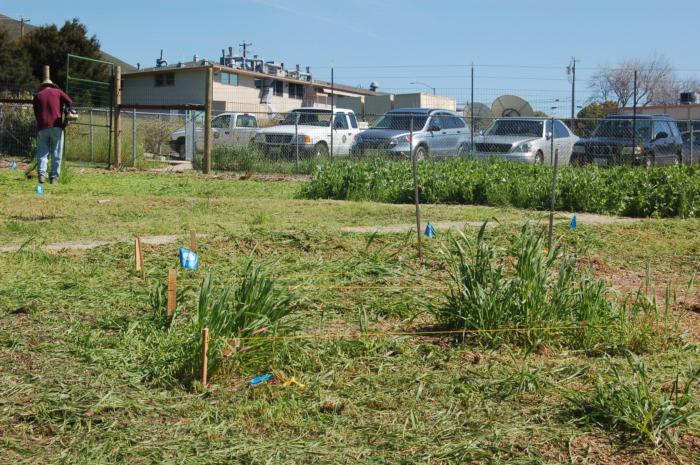
The garden’s main goals, to demonstrate sustainable gardening practices for the people of San Luis Obispo County and act as an outdoor classroom for teaching conservation of natural resources, supporting wildlife and demonstrating safe methods of producing food, while keeping scale appropriate for the average homeowner, are clearly represented and ample in scope.
Divided into sections, the garden hosts specific areas all with a defined purpose. Upon entering, a circular bed meets visitors with a mass of towering hollyhocks and sunflowers that sway as if in greeting. The pathway traverses the hill and to the left of the entrance is a neat array of drought tolerant lawn alternatives. A series of raised vegetable beds made from a variety of recycled materials, such as broken concrete “urbanite” and cinder blocks, gives gardeners a sampling of what is possible with the “leftovers.” A bed designed for wheelchair access points out that gardening can be enjoyed by all. Further down the hill is the ‘Pollinator Garden,’ and ‘Sunshine Garden.’ This area claims a portion of the younger community – a demonstration for teachers and parents that need a place to learn more about garden-based learning. Butterfly and bird homes are functional and aesthetic, while imagination runs wild in the “Storybook Garden.” Here Peter Rabbit and his siblings have room to roam while an ocean made from blue-colored rock and a boat sit ready for play next to a terracotta whale. A small bridge leads from the magical to an open space that will be designed with fire-safe landscaping in the future. An orchard of trees follows the upswing of the path. Pear, persimmon and citrus make up a small portion of the multitude. Some of these fruit trees have been planted within the same hole to demonstrate multiple trees in a small space. The use of mulch pits, in order to let water permeate thoroughly into the soil, and berms to catch runoff are sustainable methods used to conserve precious resources. A succulent and cactus garden, California native section and wildlife station, complete with bird, bat and raptor homes show more ideas for conserving and providing habitat for local wildlife. Along the perimeter, the fence holds grapevines, blueberry, blackberry and raspberry bushes, as well as espaliered fruit trees. Tomatoes poke up throughout the garden, while a mallow, a gift from a bird remains as a testament to the beauty in the unintentional. A weather station, that records rainfall, wind, temperature and soil moisture, keeps watch in the middle of the garden.
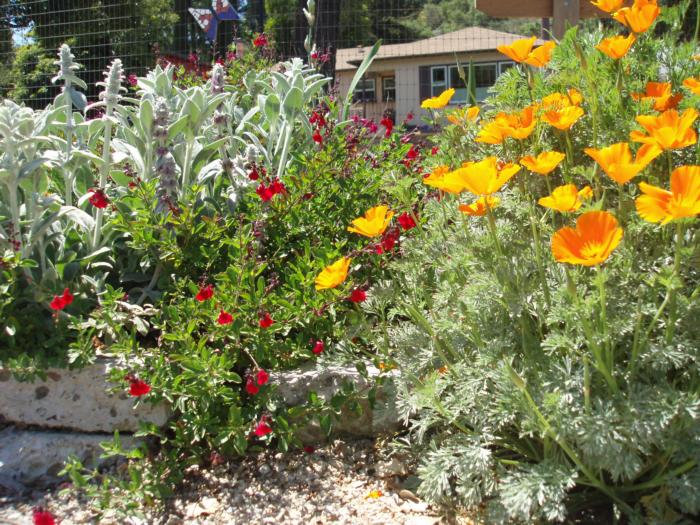
Creating the garden was not all rosy. The slope had its ups and downs in the beginning. Most difficult was adhering to code in order to get approved for wheelchair access. The level was a familiar tool along the pathway during hot construction days. Creating garden areas that did not negatively impact surrounding residences in terms of water runoff was another consideration. This problem ended with berms and swales that slow and utilize water where needed. Weeds were often resistant. Lasagna/sheet mulching with cardboard, compost and wood chips proved a good method in most places.
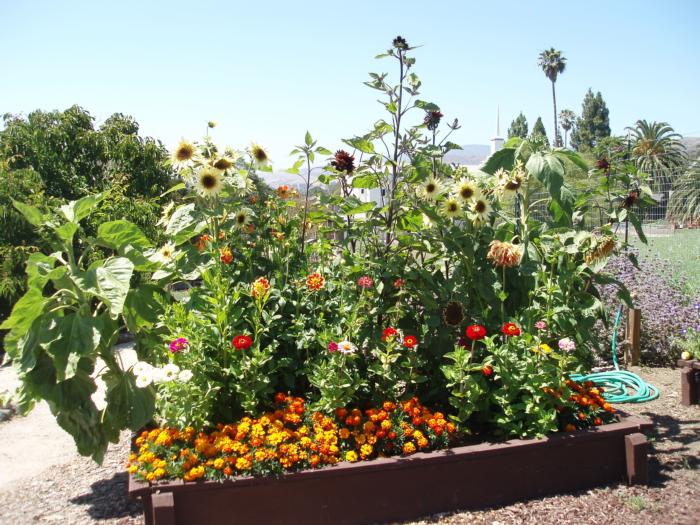
Monthly workshops are held to a packed house at the Garden of the Seven Sisters. These ‘Advice to Grow By’ workshops take place under the arbor and throughout the garden. Master Gardener volunteers research and demonstrate a wide range of topics from composting, pruning and water conservation to the particulars of growing vegetable and landscape plants. Visitors learn the ideology behind sustainability and the latest science-based gardening techniques.
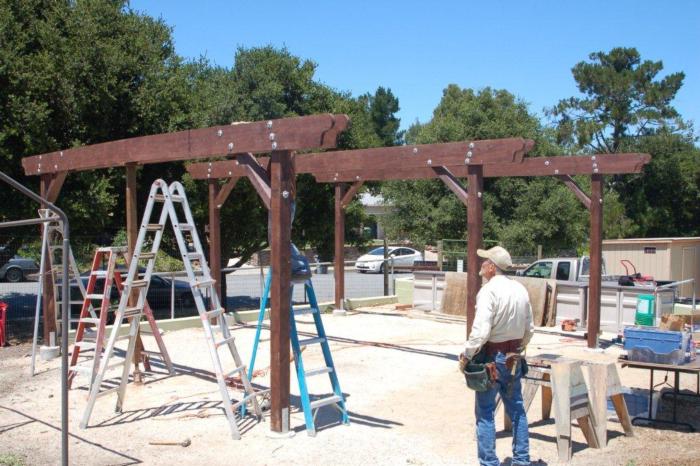
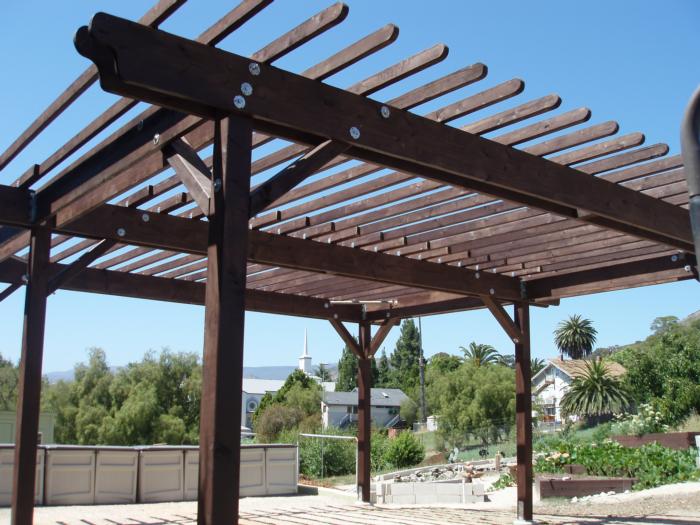
The exact cultivar of the English Walnut tree that resides on the property continues to elude UC specialists. Though it persists in anonymity, it is no longer alone.
